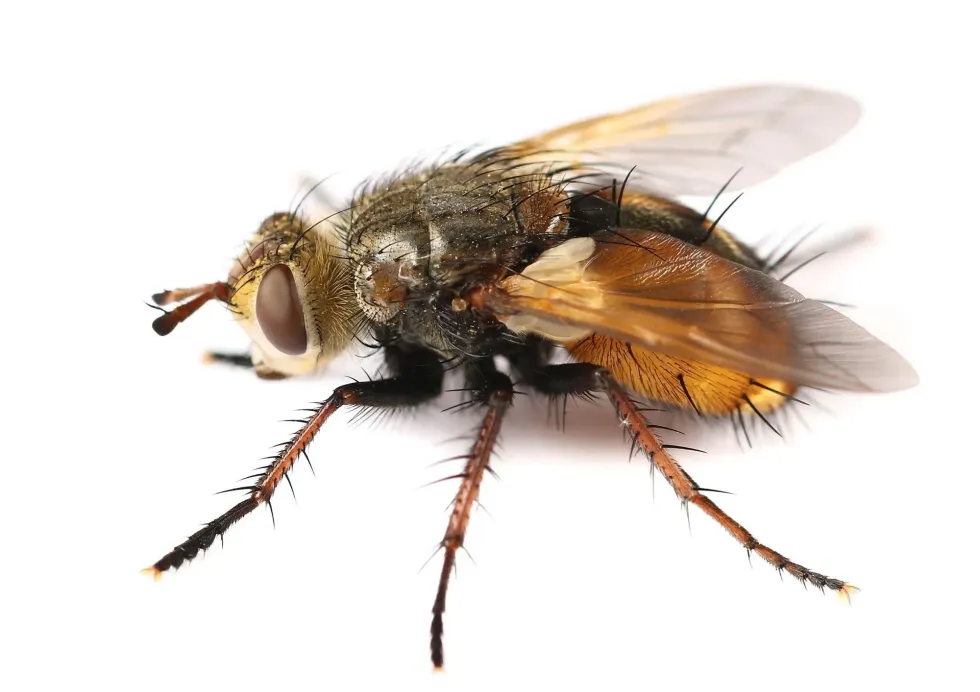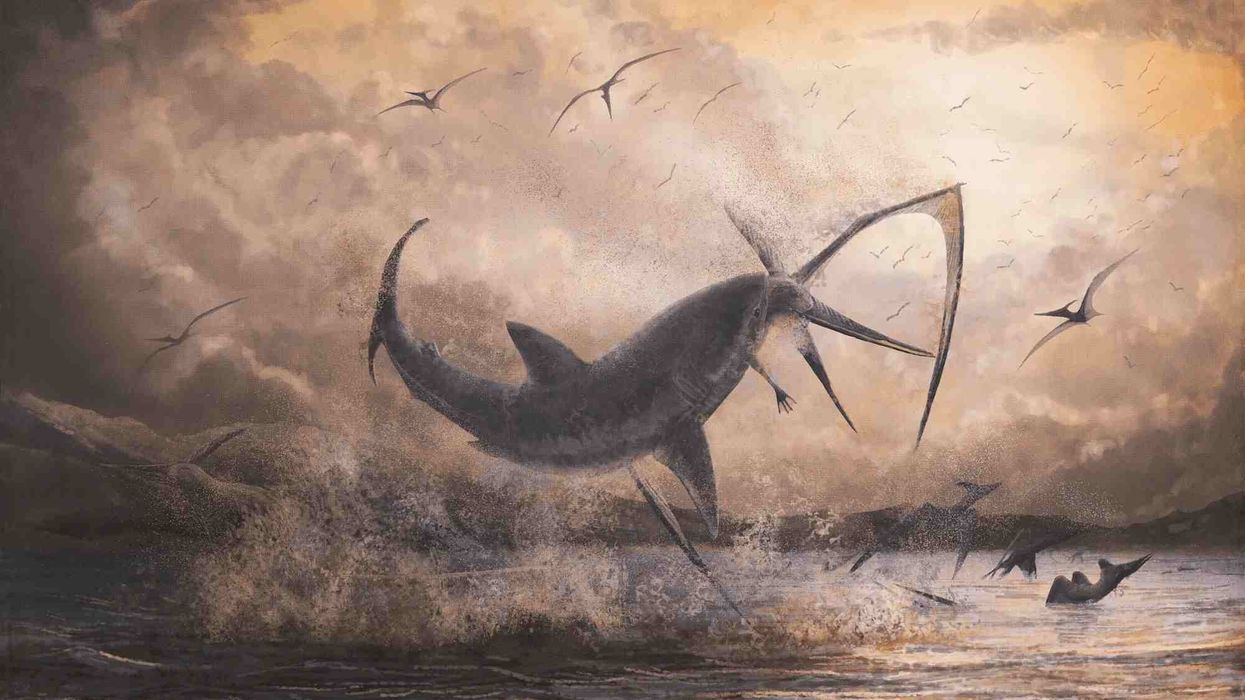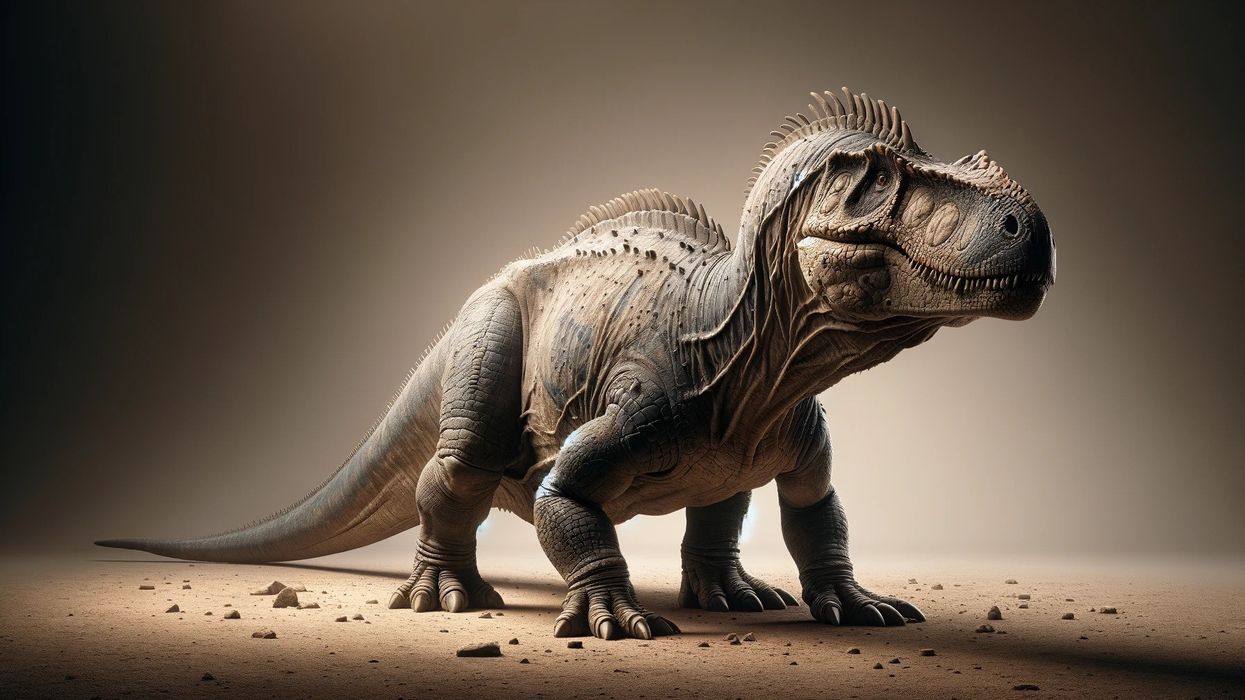Tachina is a genus in the Tachinidae family of flies. There are close to 600 identified species in the Tachina genus.
These tachinids are found all over the world and in a variety of natural habitats. The type species of the Tachina genus is the Tachina grossa, also known as Musca grossa.
The genus is characterized by strong and bristly black hairs on the thorax and abdomen and brighter heads. The eyes tend to be large.
It is very difficult to quantify Tachina flies because of their wide geographical range, their varied choice of habitats, and their short lifespans. Not all species of the Tachina genus reproduce by laying eggs, but most do.
The ones that do, lay their eggs in the bodies of host bugs like caterpillars and moths, but mostly caterpillars. Sometimes these parasite flies lay their eggs on the leaves of plants these host bugs inhabit.
After making their way into the larvae of host bugs, Tachina larvae eat their way out. Because of this behavior, they are considered to be excellent pest controllers for an agriculture site or a garden.
For more relatable content, check out these morpho butterfly facts and red admiral butterfly facts for kids.
Tachina Interesting Facts
What type of animal is a Tachina?
Tachina is a genus consisting of large flies.
What class of animal does a Tachina belong to?
Tachina flies belong to the Insecta class of animals.
How many Tachinas are there in the world?
There are about 600 species of Tachina flies found widespread throughout the world. To quantify them would be a futile task also because they live for a very short time.
Where does a Tachina live?
Tachina flies are literally found all around the world. The type species occurs throughout Asia in Mongolia, and westwards to Europe.
Another prominent species, Tachina fera, is seen in the entirety of the Palearctic realm, throughout Europe, north towards Scandinavia as well as in the European parts of Russia. This insect also occurs in north Asia, Israel, China, Korea, Mongolia, Japan, North Africa, and the Koreas.
What is a Tachina habitat?
Tachina flies are found in a variety of habitats. They are known to inhabit peatlands, dry open meadows, forests, moors, heaths, natural gardens, edges of forests, clearing, humid regions with vegetation, or even an agriculture site.
Who does Tachina live with?
Most Tachina flies tend to be solitary.
How long does a Tachina live?
Tachina flies go through their entire life cycle in two to four weeks.
How do they reproduce?
Most Tachina flies reproduce by laying parasitic eggs on the larvae of other insects like caterpillars. Others may deposit live parasitic larvae into the hosts.
The type species of Tachina grossa is known to reproduce via eggs. Female flies lay eggs on the larvae of different insects.
The larvae of the fly develop inside of the living host and keep healthy by devouring the host larvae, eventually ending its life. The main hosts of the Tachina grossa species are hairy and big Lepidopteran caterpillars, especially the Lasiocampa quercus (oak eggar moth), the Macrothylacia rubi (fox moth), as well as other Lasiocampidae.
The adults can take flight anywhere between June to September. The flies of the UK have one generation per year, but the ones in southern Europe may have two generations in a single summer.
The Tachina fera species is known to produce two generations in a year since it is a bivoltine species. Adults are seen from April to June and from July to October.
Tachina fera females do not lay eggs on caterpillars like a parasitic wasp.
They search for and lay their eggs on the leaves of a possibly nutritive plant which is also shared by the caterpillar hosts. When these eggs that have been laid on the leaves hatch, the young fly larvae enter a caterpillar's body (one larva for every caterpillar) and consume it from the inside.
Tachina fera larvae are parasitoids of caterpillars as well as other young insect larvae, like moths of the Lymantriidae and Noctuidae families. The species affected by Tachina fera flies include the broom moth (Ceramica pisi), small quaker (Orthosia cruda), dun-bar (Cosmia trapezina), common quaker (Orthosia cerasi), gypsy moth (Lymantria dispar), pine beauty (Panolis flammea), and black arches (Lymantria monacha).
The pupation of Tachina fera flies happens outside of the host's body, among the soil litter.
Adult flies tend to disappear after two weeks. These flies play an important role in pest control in forests.
What is their conservation status?
The conservation status of the various Tachina flies is Not Evaluated by the IUCN.
Tachina Fun Facts
What does the Tachina look like?
The type species of Tachina grossa is the biggest of the tachinids, in most of its geographic range in Europe. They are very distinctive-looking, with a lot of hair and a black colored abdomen and thorax. Their flight resembles that of a bumblebee.
The abdomen is curved, inflated, and covered with straight, stiff bristles, especially near the abdominal segment's ends. The head of the Tachina grossa species is colored bright yellow and has yellow occipital bristles. The eyes are compound, dark brown, and big.
A sharp angle near the antennae's base is formed by the forehead. The maxillary palpi tend to be filiform and thin. The wings tend to have a yellowish-brown base and are hyaline or translucent.
The Tachina fera species has a dense pollinosity which is why their thorax has a grayish upperside as well as black, regular stripes. The abdomen of the Tachina fera is yellow-orange and has a black, wide dorsal stripe that ends in a point.
The abdomen and thorax are bristly, more so near the tip, where they tend to have protruding, black, and thorn-shaped bristles. Near the thorax is a prominent, shiny, and orange-red bump that is called the postscutellum, which has a black, thin edge.
The head of the Tachina fera fly is yellowish with long antennas. The second segment of the head is yellow and the third segment is black and much shorter.
The head's backside has yellowish hairs. The eyes are compound, large, and red. The eye size is actually dependent on sex.
The mouthparts have palps that are thin, long, and thread-like. The wings have a slight yellow tinge to them, have brownish-yellow veins, and have a yellow-brown base.
The rear extension or calyptrae on the forewing tends to be whitish-yellow. The legs are mostly yellowish, but males have darker legs that have a yellow tip.

How cute are they?
Tachina flies are beautiful little creatures. They have mostly black and bristly, hairy bodies that are contrasted beautifully by brighter colored heads. They also have beautiful big eyes and mostly translucent wings.
How do they communicate?
Tachina flies communicate information about their readiness to mate through chemical pheromones. They also communicate via vibrations that they make with their legs and wings.
Some flies may also produce sound through ripples in water or currents of air. Some may generate tiny tremors on surfaces they live on. These vibrations and signals are not exactly audible to humans since the frequencies are low and can include differing acoustic elements.
Tachina flies are able to distinguish between sounds like rain, wind, and leaves. These vibrations are also used by these insects to warn each other about approaching parasites and predators.
Tachina flies may not have the same efficient communication with other flies as they do with conspecifics, but they can learn to communicate when they are close together, giving out scent, and visual cues.
How big is a Tachina?
Tachina flies are 0.3-0.7 in (0.9-1.9 cm) long and they have a wingspan of 0.6-1.1 in (1.6-2.7 cm), making them four to eight times smaller than Gauromydas heros flies.
How fast can a Tachina fly?
Like most flies, a Tachina fly may be able to fly at speeds of 5 mph (8 kph).
How much does a Tachina weigh?
A Tachina fly weighs 0.001-0.002 oz (0.035-0.045 g).
What are the male and female names of the species?
Males and females of the many species of the Tachina genus do not have specific names.
What would you call a baby Tachina?
A baby Tachina fly is called a larva.
What do they eat?
Tachina fly species feed on pollen and nectar of flowers. They themselves are preyed upon by animals like bats, frogs, toads, and birds.
Are they dangerous?
No, Tachina flies are commonly not dangerous. In fact, they are very beneficial to your garden. They search for, parasitize, control, and kill the bugs that may be considered pests. The buzzing sounds made by the parasite Tachina flies may be somewhat irritating.
Would they make a good pet?
No, they live important and specific lives in their natural habitats. These parasite flies would not make good pets, but having them in your personal garden can be beneficial since they parasitize pests.
Did you know...
Tachinids are commonly known to inhabit many different kinds of habitats all over the world. There are thought to be around 1,300 distinct species in the United States and the North American continent alone.
Tachinids of the Tachinidae family and order Diptera are not known to bite. Tachina is a genus of big flies species also in the family Tachinidae.
Tachinids flies, the ones that lay their eggs, do so directly into the larvae of host bugs or on the leaves of the plants inhabited by the host bugs.
Tachinids have a size range of 0.08-0.7 in (0.2-1.8 cm).
The kingdom, phylum, class, order of the Tachina genus are Animalia, Arthropoda, Insecta, Diptera. All the flies belong to the same kingdom, phylum, class, order. Diptera order contains the family Tachinidae.
Tachina populations are actively encouraged in gardens in the United States to control pests. Any published article on Tachina flies references their benefits as pest controllers.
The three species classified by Coquillett include Tachina politula, Tachina palpalis, and Tachina lueola. English entomologist, Francis Walker, also has classified 76 species of Tachina flies.
Do Tachina flies bite?
Tachina flies are not known to bite humans, but if they did, it would be a stinging one.
Are Tachina flies predators?
No, Tachina flies are not predators. The tachina fly follows wasp-like parasitic behavior by parasitizing host bugs. The tachinids only feed on pollen and nectar of flowers.
Here at Kidadl, we have carefully created lots of interesting family-friendly animal facts for everyone to discover! Learn more about some other arthropods from our painted lady butterfly surprising facts and cabbage white butterfly fun facts pages.
You can even occupy yourself at home by coloring in one of our free printable hairy dragonfly coloring pages.









